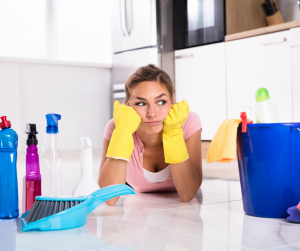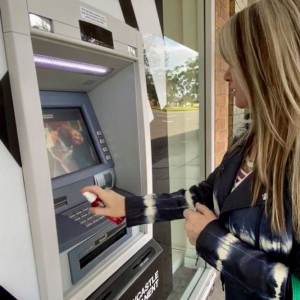So we’re washing and sanitising our hands more than ever – yet outbreaks continue to occur. What more can we do to protect ourselves and those around us over the holiday break?

Lately we have been asking the question, “Is it enough for our focus only to be washing and sanitising your hands during these times?” With the current outbreaks happening in New South Wales we thought it’s timely to raise the question again as it’s more important than ever to try and keep our friends and family safe, our borders open and most importantly reduce the spread.
It’s certainly the most effective way to keep ourselves protected against touch contamination and it’s easy to do at home and when you are out and about. But how many surfaces do we touch when we are out and about in between places?
Carrying hand sanitiser with you when outside the home is one way to take control of your personal protection. Many people have started to do this but we’ve been thinking about how many surfaces we touch in routine trips from home or when we are away on holidays travelling. Shopping trolleys, pedestrian crossing buttons, toilet door handles, seats and flush buttons, café door handles, tables, chairs, ATM buttons, garbage bin lids, checkout pin buttons, Ubers, taxis, trams, trains and buses are all to name just a few…
Focusing on sanitising our hands before/after each touch could mean dozens of applications a day. Many people find it drying and stressful to the skin – so what if we added a focus on the surfaces themselves?
Our aim at Zexa is to build a low touchpoint community to help reduce the spread of germs. It makes sense that as well as making it easy for every person to keep themselves safe, we provide a way to ensure the surfaces you touch can also be cleaned of contaminants.
Beating this pandemic will take an effort from each of us – here, we examine how an emphasis on surface sanitisation protects not only you – but also the person behind you.
What is Surface Sanitiser?
Surface Sanitiser reduces the number of disease-causing (pathogenic) bacteria on an inanimate contact surface to safe levels as judged by public health requirements.
A sanitiser generally is a chemical that kills 99.9% of specific test bacteria in a specified amount of time.
Surface Sanitisers that are suitable on all cleaned porous and non porous surfaces without the need to rinse off would be a super help in these times when we are out and about more than ever. These are highly suitable for small or large scale sanitation and the most popular ones are ‘air dry’ types, so there’s no need to wipe it off the surface.
 What is the difference between a detergent, sanitiser and disinfectant?
What is the difference between a detergent, sanitiser and disinfectant?
Detergent, disinfectants and sanitisers are all used in cleaning but there are important differences between them. Using the right product for the right purpose ensures that cleaning is effective.
Detergents
A detergent is a product that removes dirt and dissolves grease. It is a surfactant that can help you remove dirt and grease from dirty dishes and preparation areas and it is also an ingredient in many surface cleaning products.
Using detergent is one of the first and more important steps in cleaning. The reason for this is because it helps to capture, lift and remove dirt and grease. It is crucial to know though that detergent alone does not ensure the killing of bacteria.
Disinfectants
Disinfectants are chemical products that reduce bacteria to a safe level. They can be used after a detergent to ensure that any remaining bacteria are destroyed.
They are often used to clean food contact areas (such as chopping boards, or counters) and hand contact areas (such as taps or fridge handles) and especially in areas where preventing the growth or spread of pathogens is critical (hospitals etc).
Hot water at 82c or steam can also disinfect. Always follow the manufacturer’s guidelines when using chemical disinfectants.
Disinfectants must be left on for a certain amount of time to destroy bacteria. This is called the contact time and it will vary from brand to brand.
There are many products on the market calling themselves disinfectants and there are household grade, commercial grade and hospital grade versions to choose from.
Sanitiser
A sanitiser is a combination of a detergent and a disinfectant. It is, therefore, used to remove dirt, dissolve grease and reduce bacteria to a safe level. Sanitisers are very practical; however, the detergent in them is greatly diluted and is therefore only useful on surfaces that are not very dirty.
Sanitisers can also be ‘air dry’, leave-on type products and their usefulness to endure debris-free surfaces are safe to touch is high.
 Could having ‘portable’ versions of products like this be helpful to help #StampCOVIDOut?
Could having ‘portable’ versions of products like this be helpful to help #StampCOVIDOut?
Using highly effective, safe surface cleaners and sanitisers regularly is one simple way you can be protected from germs when you’re out and about.
As innovation is in our DNA, at Zexa we have packaged some of our commercial grade sanitisers into mini’s for you to be able to use on the go. Having portable surface sanitisers on you wherever you go means you can ensure any communal surfaces you touch will be safe.
By adding this into your daily routine, you will not only be keeping yourself safe but also the person behind you. Both alcohol based and alcohol free packs are easy use, are in 100mL packaging to make it convenient for you to take everywhere you go to ensure communal surfaces will be safe to touch.
By having these duos with you wherever you go and using them on each surface you touch or items you use, you are also potentially reducing the spread of COVID-19. As we think of ways to help prevent outbreaks, it makes sense that, if every person ensures they are sanitising surfaces as well as hands, there would be an eventual reduction in the spread of germs from touch contamination.
Maintaining social distancing and cleaning and sanitising hands – tick! What if we add sanitising surfaces and equipment in our daily pathway to the ‘to do’ list?
The right surface sanitiser, once sprayed, kills up to 99.9% of germs in less than a minute. Sure Shield has a 100mL minis range that can be used anywhere and everywhere. Take them on your morning walk, playground, office, public spaces and they are even safe for you to use with children.
Is there a performance difference between Alcohol Free and Alcohol based products?
T he standard to call a product a sanitiser or disinfectant does not rely on it containing alcohol. It is a performance based exercise – it must kill certain pathogens (germs) within a certain time frame no matter what the ingredients are.
he standard to call a product a sanitiser or disinfectant does not rely on it containing alcohol. It is a performance based exercise – it must kill certain pathogens (germs) within a certain time frame no matter what the ingredients are.
There’s an emerging complaint about the side effects of alcohol based products on skin and many of the lower quality products are very harsh and have a very offensive smell! There’s also the safety aspect to consider, with the alcohol being more toxic when ingested and unsuitable for used around open flames such as BBQs.
Some people are unable to be around alcohol based products for health or environmental reasons.
Zexa was one of the first companies to respond in the early stages of the COVID-19 outbreak to bring an alcohol-free product to market. It was tested to make sure it performed the same bacteria kill as the alcohol based products and it has proven popular due to its non-flammable, safe to use and gentle to skin properties.
Why we believe Alcohol free hand sanitiser is preferred
You don’t have to compromise on smooth, soft skin. These new sanitisers work to kill germs AND hydrate your hands.
By now we’re all well-versed in the side effects of going overboard with sanitiser on our hands. Some products leave your skin red, raw, cracked and itchy while others are gloopy, sticky or smell of cheap vodka.
Choosing a good quality, tested, alcohol free hand sanitiser offers the peace of mind of low fire hazard and reduced damage to surfaces and skin.
Touch point tracking surfaces we touch?

We have spoken before about touch point tracking and the frequency with which we touch common surfaces is only one side of the coin. Developing a low touch economy and reducing the spread of germs relies purely on us as individuals.
Let’s examine for a moment what it would look like if we all carried surface sanitisers with us all the time. Would we be better protected from contaminated surfaces? Yes. Would others touching the surfaces we just sprayed be better protected? Yes. Would there be less burden on businesses who are trying with so few staff and so many customers to keep surfaces cleaned and sanitised as people come and go? Absolutely!
Taking control of our own space makes sense on many levels and supporting our customers and community is a core value for us here at Zexa. We are excited to provide a pathway for you to be part of building a low touch economy as we look towards the future.
Right now, the future is unknown for some States and cities in Australia with the COVID-19 restrictions. If enough people play a part in reducing the spread of germs and building a low touch economy by using hand and surface sanitisers, we believe the future could become more certain sooner.
Always be conscious of what you touch in shared spaces and make sure you have cleaned it before and after use. We cannot stress enough by having these minis with you on the go, you are equipped to keep yourself safe and you’re also looking after the person behind you.
THAT is how we #StampCOVIDOut!
I think this is an informative post and it is very useful and knowledgeable. therefore, I would like to thank you for the efforts you have made in writing this article.